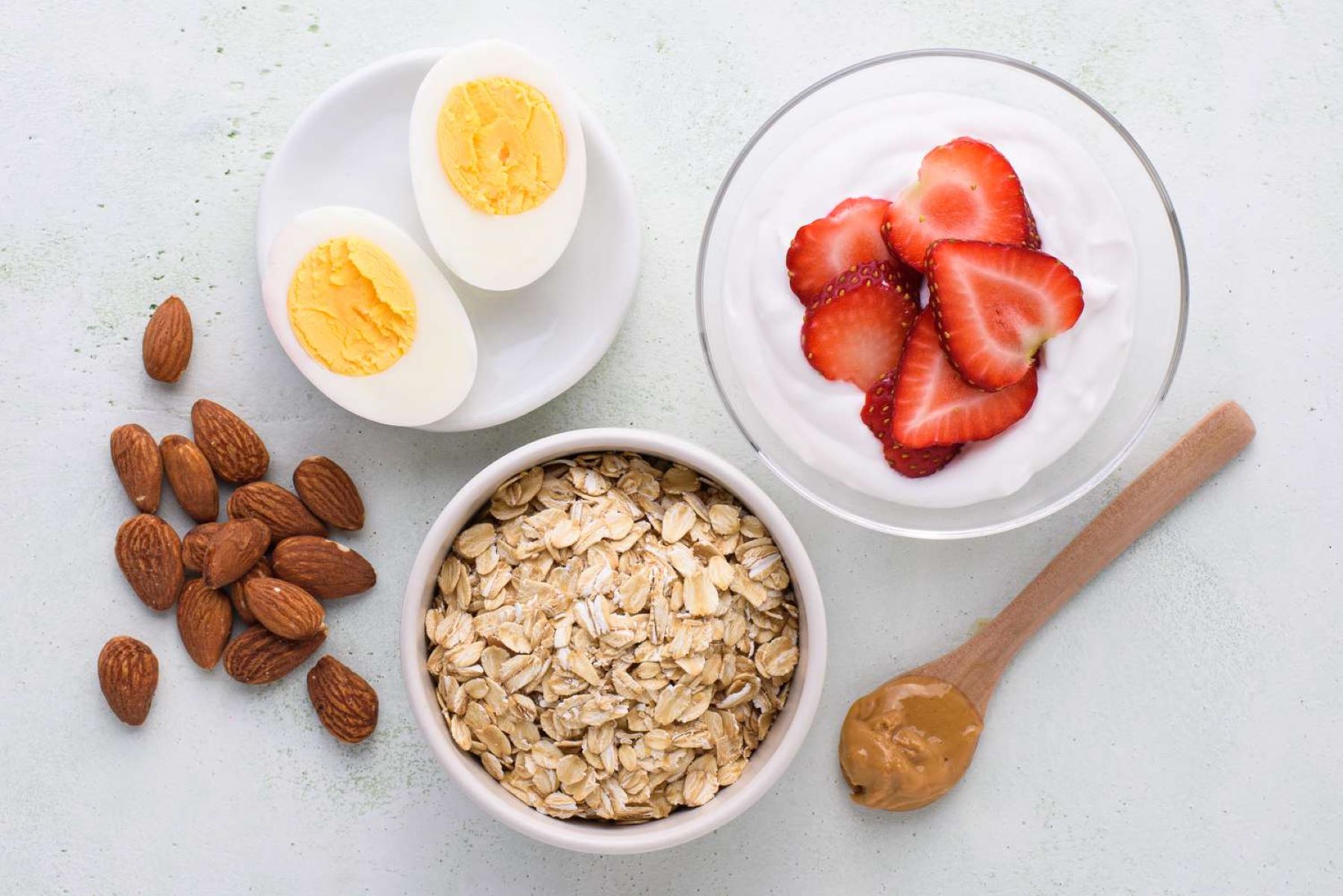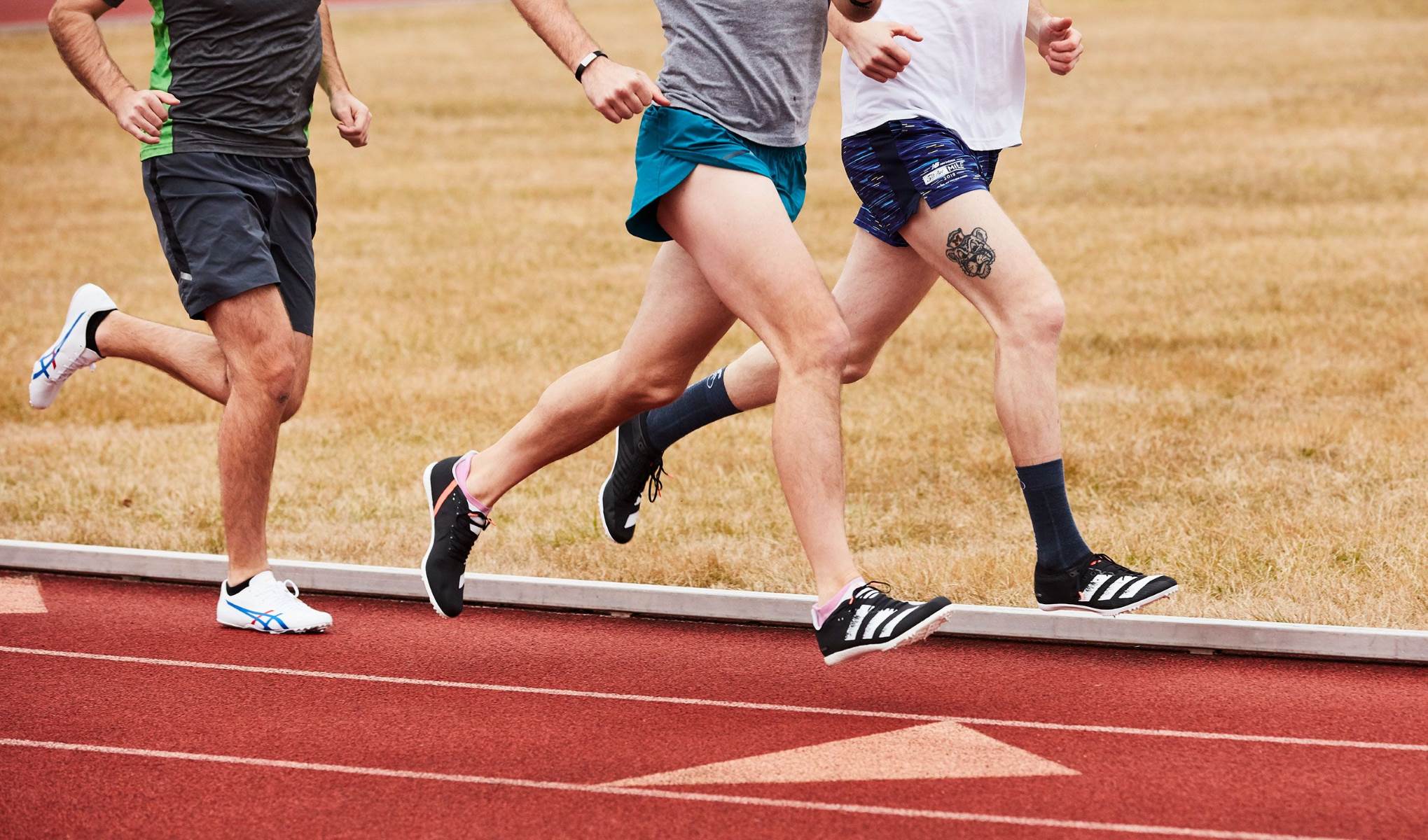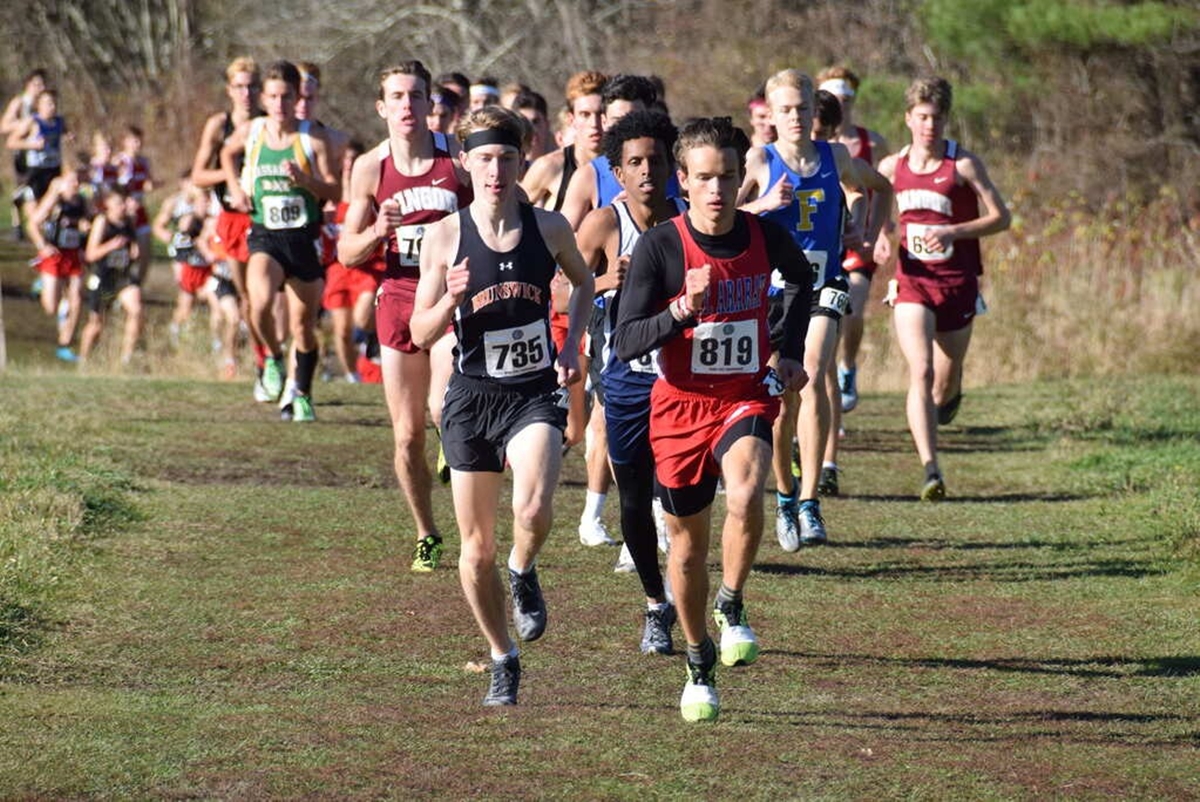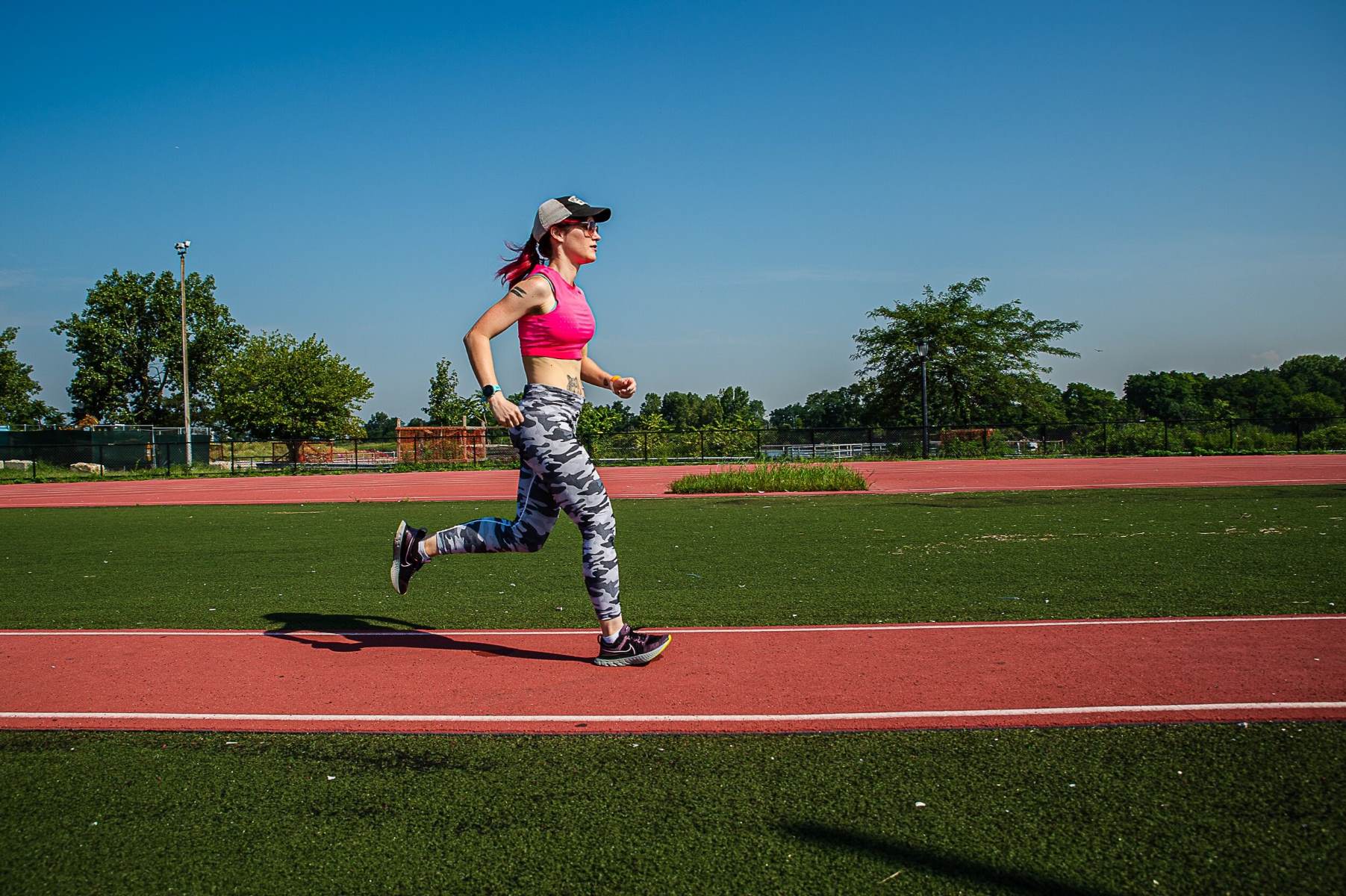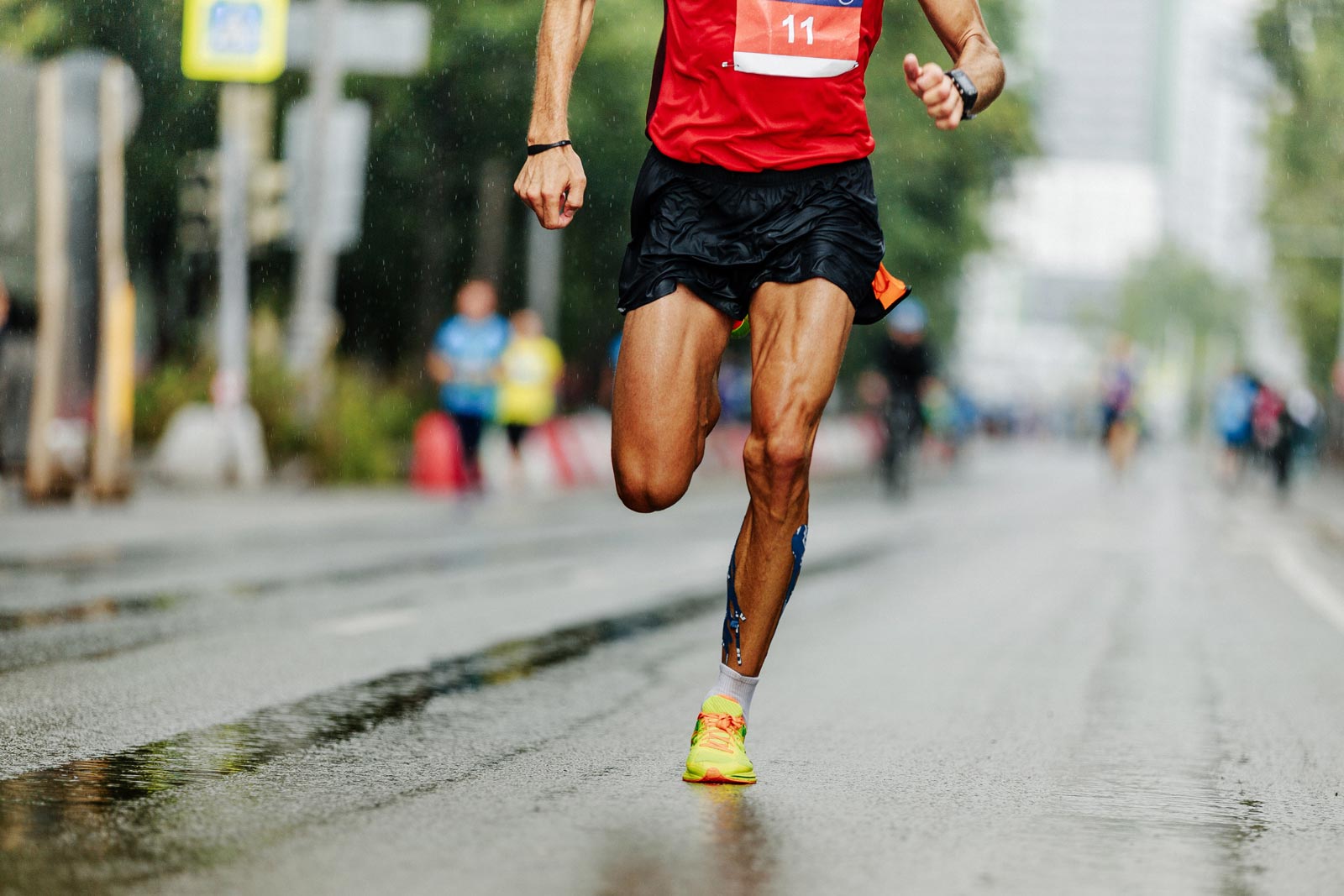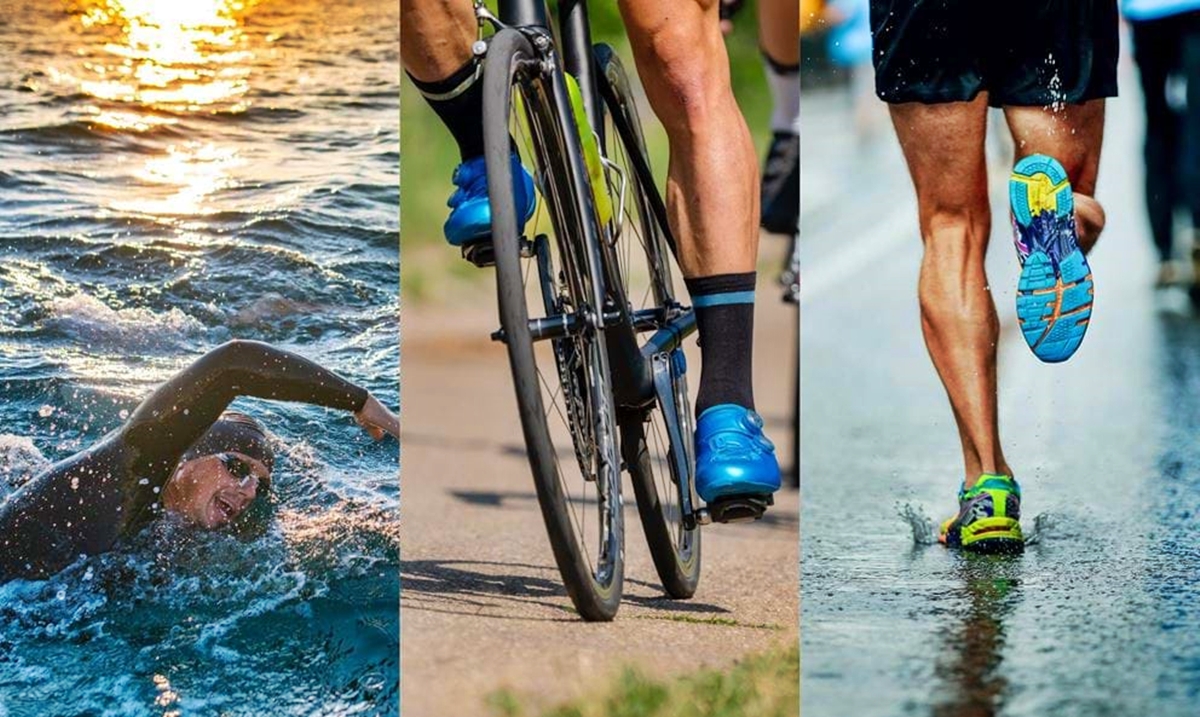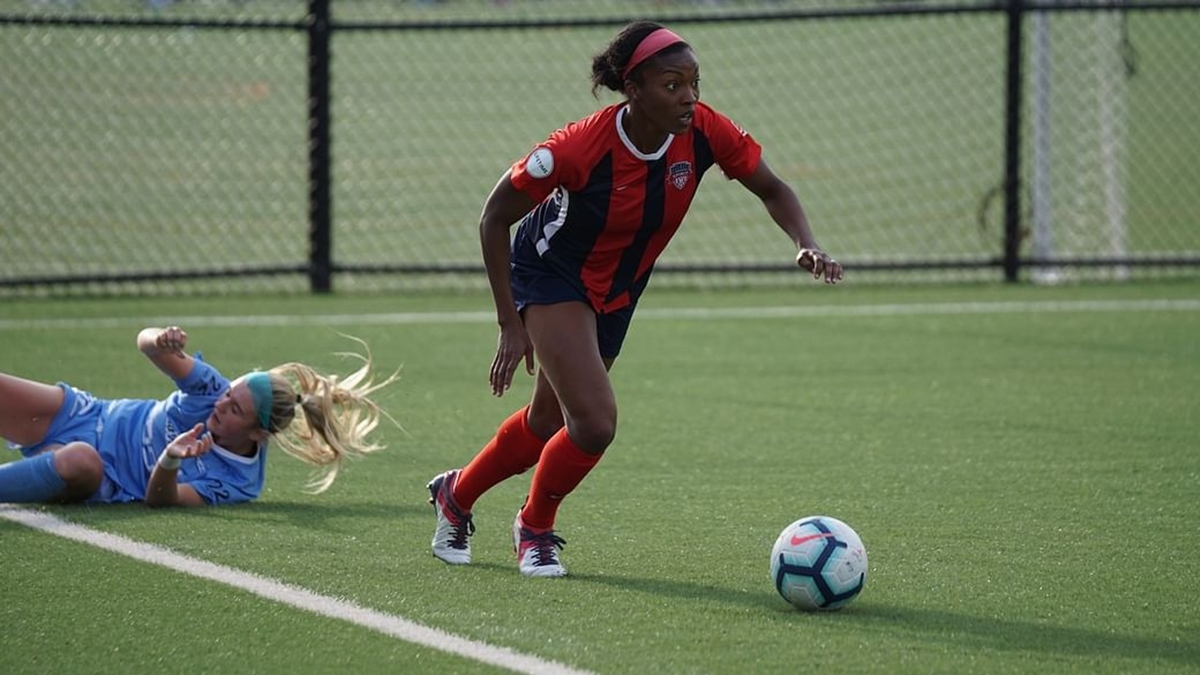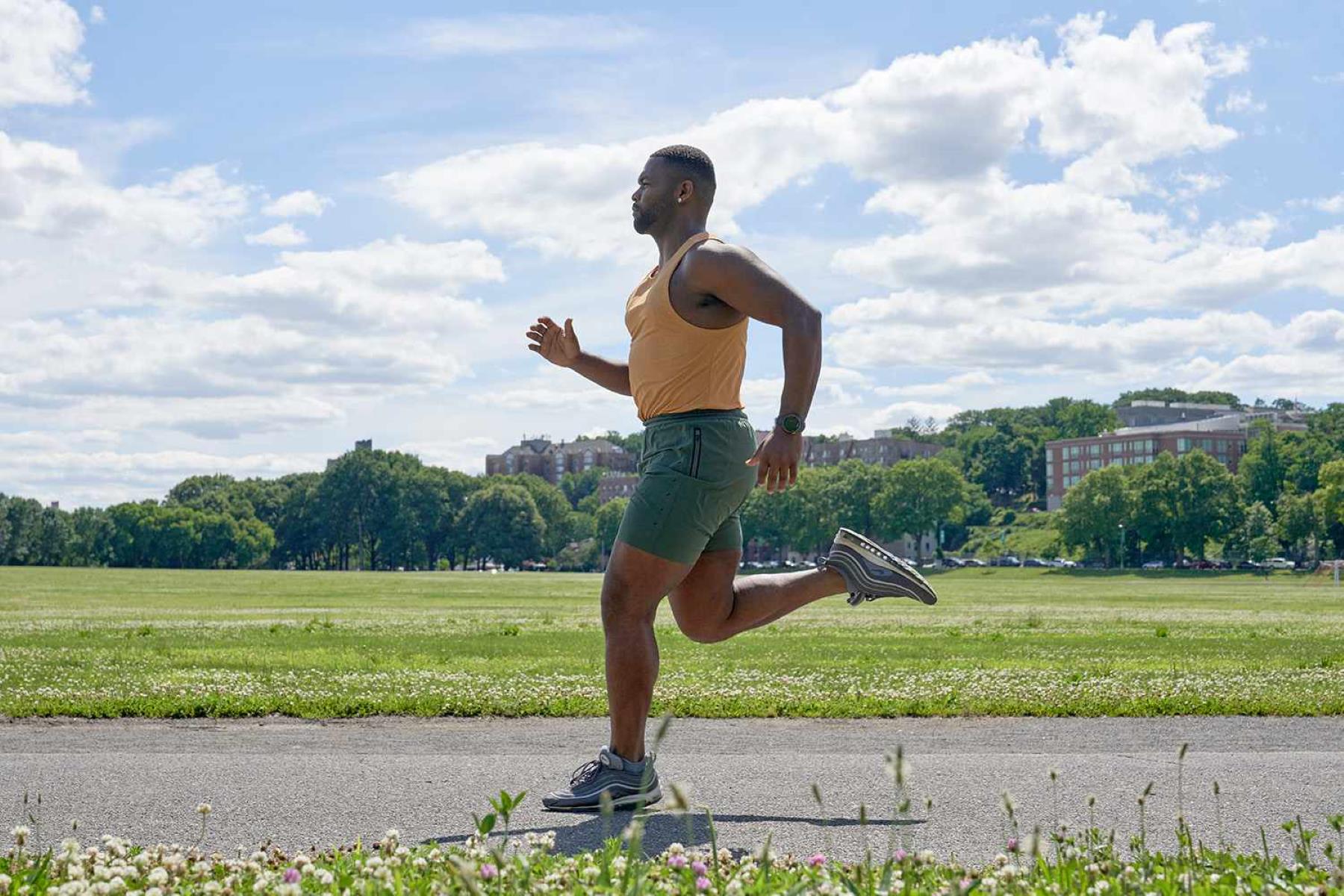

Featured
How To Sprint Faster
Modified: January 22, 2024
Learn the secrets of how to sprint faster with our featured guide! Maximize your speed and improve your performance in just a few steps.
Introduction
Sprinting is a fundamental skill that is not only essential for athletes but can also benefit individuals looking to improve their overall fitness and physical performance. Whether you’re a sprinter aiming to shave a few precious milliseconds off your race time or simply want to increase your speed and explosiveness, learning how to sprint faster can be a game-changer.
In this article, we will explore the various techniques and strategies to help you sprint faster and reach your full athletic potential. From understanding the mechanics of sprinting to developing explosive leg strength, perfecting running technique, and implementing effective training methods, we will cover all the essential aspects of sprinting performance. So, if you’re ready to take your sprinting abilities to new heights, let’s dive in!
Improving your sprinting speed offers a wide range of benefits beyond just athletic performance. By increasing your speed, you enhance your cardiovascular fitness, build lean muscle mass, and boost your metabolism. Additionally, sprinting helps improve your coordination, agility, and overall body control.
It is worth noting that sprinting is a skill that can be learned and improved upon with consistent practice and application of the right techniques. While genetics can play a role in determining your natural sprinting ability, anyone can make meaningful progress with the right mindset and training approach.
This article will provide you with a comprehensive guide to help you sprint faster. From understanding the mechanics of sprinting to developing explosive leg strength and implementing proper warm-up and cool-down routines, we will cover all the necessary aspects of becoming a faster sprinter.
Whether you’re an aspiring athlete, a fitness enthusiast, or simply someone looking to challenge yourself and achieve new fitness goals, the knowledge and strategies shared in this article will help you on your journey towards becoming a faster and more powerful sprinter.
Importance of Sprinting Faster
Sprinting faster is not just about winning races, it is a crucial skill that has numerous benefits for athletes and fitness enthusiasts alike. Let’s delve into the importance of sprinting faster and why it should be a key focus in your training regimen.
1. Improved Athletic Performance: Whether you’re a track and field athlete, a football player, or a basketball player, sprinting faster can significantly enhance your performance in your respective sport. The ability to accelerate quickly, reach top speed efficiently, and change direction rapidly can give you a competitive edge.
2. Increased Muscle Fiber Recruitment: Sprinting at high intensity engages a larger number of muscle fibers in your legs, including the fast-twitch muscle fibers that are responsible for generating explosive power. By regularly sprinting and pushing your limits, you can stimulate the growth and development of these muscle fibers, resulting in increased speed and power.
3. Enhanced Metabolic Conditioning: Sprinting is an intense form of exercise that places a high demand on your cardiovascular system and metabolic processes. Regular sprint training helps improve your cardiovascular fitness, boost your metabolic rate, and burn calories more efficiently. This can contribute to weight loss, improved body composition, and overall physical health.
4. Improved Body Composition: Sprinting is a highly effective way to build lean muscle mass and reduce body fat. The explosive nature of sprinting activates your fast-twitch muscle fibers, which are responsible for muscle growth and development. Additionally, the high-intensity nature of sprinting elevates your heart rate and promotes calorie burning, helping you achieve a leaner physique.
5. Increased Power and Acceleration: Sprinting is all about generating power and speed from a stationary position. By training to sprint faster, you develop the ability to generate explosive power and acceleration, which can be beneficial in various sports and activities that require quick bursts of speed, such as soccer, basketball, and tennis.
6. Enhanced Overall Fitness: Sprinting is a whole-body exercise that engages multiple muscle groups, including your legs, core, and upper body. Regular sprint training helps improve your overall fitness by strengthening your muscles, improving your cardiovascular endurance, and enhancing your agility and coordination.
7. Mental Strength and Discipline: Sprinting at high intensity requires mental toughness, focus, and discipline. Pushing yourself to sprint faster not only enhances your physical abilities but also strengthens your mental resilience. The dedication and commitment required for sprint training can carry over into other areas of your life, helping you become more disciplined and goal-oriented.
Sprinting faster is not just a goal; it is a journey. By consistently incorporating sprint training into your workouts and implementing the techniques and strategies outlined in this article, you can experience the numerous benefits and unleash your full sprinting potential.
Understanding the Mechanics of Sprinting
Sprinting is a complex movement that involves the coordinated effort of multiple muscles and joints in your body. To sprint faster, it is important to understand the mechanics behind this explosive movement. Let’s explore the key elements of sprinting mechanics:
1. Starting Position: The starting position is crucial for a successful sprint. It is essential to have a balanced stance with your feet hip-width apart, knees slightly bent, and weight evenly distributed between both feet. Your upper body should be leaned slightly forward, and your arms should be relaxed and ready to drive back.
2. Drive Phase: The drive phase occurs immediately after the start. As you push off with your legs, your body should move forward and slightly upwards, with your head and shoulders rising first. Your arms should drive back, opposite to the leg that is extending. This phase focuses on generating maximum power and acceleration.
3. Transition Phase: The transition phase happens as you reach top speed. At this point, your body gradually transitions to an upright position. Focus on maintaining a tall posture, with your chest lifted, shoulders relaxed, and arms swinging naturally. Your stride length and frequency should be optimized at this stage.
4. Action of Arms: Your arms play a vital role in sprinting. They should move in a controlled and synchronized manner with your legs. As your lead leg extends forward, the opposite arm should drive back, engaging the core muscles and providing additional power. Maintain a 90-degree angle at the elbow and swing your arms straight back and forth without crossing the midline of your body.
5. Leg Action: The leg action in sprinting includes multiple components. As your driving leg extends behind you, your support leg should drive forcefully into the ground, propelling you forward. The forefoot should strike the ground, followed by a powerful push-off from the toes. Focus on achieving maximum stride length without overstriding, which can decrease efficiency and speed.
6. Rhythm and Timing: Sprinting is all about rhythm and timing. To sprint faster, it is important to find a smooth and efficient stride pattern that suits your body mechanics. Practice and repetition will help you establish a rhythm and timing that optimize your stride length, stride frequency, and overall sprinting speed.
7. Relaxation: Relaxation is key to efficient sprinting. Tension in your muscles can hinder your speed and movement. Focus on staying relaxed and fluid throughout the sprint, especially in your face, neck, shoulders, and arms. Letting go of unnecessary tension allows for smoother and more efficient movement.
By understanding and applying these key principles of sprinting mechanics, you can optimize your performance and sprint faster. Practice proper technique and seek feedback from coaches or trainers to refine your sprinting mechanics and unlock your full sprinting potential.
Developing Explosive Leg Strength
Explosive leg strength is vital for sprinting faster. Developing powerful and robust leg muscles can greatly enhance your ability to generate the force needed for faster sprinting. Here are some effective strategies to help you develop explosive leg strength:
1. Squats: Squats are a compound exercise that targets multiple muscle groups in the lower body. They primarily work the quadriceps, hamstrings, glutes, and calves. Incorporate variations like barbell squats, goblet squats, and Bulgarian split squats into your training routine to build leg strength and power.
2. Lunges: Lunges specifically target the quadriceps, hamstrings, glutes, and calves. They help improve unilateral leg strength, balance, and stability. Include forward lunges, reverse lunges, walking lunges, and lateral lunges in your workouts to strengthen your legs and enhance sprinting performance.
3. Plyometric Exercises: Plyometric exercises involve explosive movements that engage your muscles in a rapid stretching and contracting cycle. Exercises like box jumps, depth jumps, and bounding help develop explosive power in your leg muscles, enabling you to generate more force with each stride.
4. Hill Sprints: Hill sprints are an excellent way to build leg strength and power. Running uphill forces your leg muscles to work harder against gravity, promoting strength development. Find a steep hill and perform short, intense sprints to challenge your leg muscles and improve your sprinting ability.
5. Deadlifts: Deadlifts are a compound exercise that targets multiple muscle groups, including the glutes, hamstrings, and lower back. They help develop hip power, core stability, and overall lower body strength. Proper form is crucial to prevent injury, so consult a trainer or coach to ensure correct technique.
6. Calf Raises: Strong calves are essential for generating the propulsive force required in sprinting. Perform calf raises on a step or with a calf raise machine to target the gastrocnemius and soleus muscles. To add intensity, try single-leg calf raises or perform them on an incline surface.
7. Resistance Band Exercises: Incorporate resistance band exercises into your leg workout routine to add extra resistance and challenge your muscles. Exercises like resisted squats, lateral band walks, and seated leg extensions with bands help target specific muscle groups and improve overall leg strength.
8. Explosive Jumping Exercises: Exercises like vertical jumps, broad jumps, and tuck jumps can help develop explosive power in your leg muscles. These exercises focus on maximizing force production and improve your ability to generate power in your sprinting stride.
9. Single-Leg Training: Incorporate single-leg exercises such as single-leg squats, step-ups, and single-leg deadlifts to improve balance, stability, and strength on each leg individually. This helps address any muscle imbalances and enhances overall leg strength for more efficient sprinting.
10. Rest and Recovery: Allow adequate rest and recovery between leg training sessions to allow your muscles to repair and grow stronger. Overtraining can lead to fatigue and compromise your progress. Incorporate rest days and focus on proper nutrition and sleep to optimize recovery and leg muscle development.
By incorporating these strategies into your training routine, you can develop explosive leg strength and power, ultimately improving your sprinting performance. Remember to start with proper form and gradually increase the intensity and volume of your exercises for safe and effective leg muscle development.
Incorporating Plyometric Training
Plyometric training is a highly effective method for improving power, explosiveness, and speed. By incorporating plyometric exercises into your training routine, you can enhance your sprinting performance and take your athletic abilities to the next level. Here’s how you can incorporate plyometric training:
1. Understanding Plyometrics: Plyometric exercises involve rapid stretching and contracting of muscles, which helps improve the efficiency of your neuromuscular system. This training method focuses on developing the stretch-shortening cycle, allowing your muscles to rapidly generate force and explosiveness.
2. Progressive Training: Start with foundational plyometric exercises to build a solid base. Begin with lower-intensity exercises, such as jumping jacks and squat jumps, and gradually progress to more advanced movements, like box jumps and depth jumps. Always prioritize proper technique and form to reduce the risk of injury.
3. Box Jumps: Box jumps are a staple in plyometric training. Start with a lower box height and gradually increase it as you become more comfortable and stronger. Focus on exploding upward, using your hips and legs to generate power. Land softly with a slight bend in your knees to absorb the impact.
4. Depth Jumps: Depth jumps are an advanced plyometric exercise that involves stepping off a box or platform and immediately rebounding upward upon landing. This exercise helps teach your body to quickly absorb and generate force. Start with a lower drop height and progress gradually to higher heights as your strength and landing technique improve.
5. Lateral Bounds: Lateral bounds are excellent for developing power and agility for sprinting. Begin in a semi-squat position and explosively jump laterally, landing softly on the opposite leg. Focus on controlled movements and landings, and gradually increase the distance and intensity as you progress.
6. Single-Leg Hops: Single-leg hops help improve balance, stability, and power. Stand on one leg and explosively hop forward, sideways, or diagonally, landing softly on the same leg. This exercise targets the muscles responsible for maintaining a stable and efficient stride during sprinting.
7. Plyometric Push-ups: Plyometric push-ups develop upper body power and explosiveness. Begin in a push-up position and explosively push your hands off the ground, allowing your body to leave the floor. Land softly and immediately go into the next repetition. Focus on generating power through your upper body and core.
8. Frequency and Volume: Plyometric training is demanding and places significant stress on your muscles and joints. Start with 1-2 sessions per week and gradually increase the frequency as your body adapts. Aim for 10-15 minutes of plyometric exercises in each session, focusing on quality repetitions rather than excessive volume.
9. Rest and Recovery: Allow adequate rest and recovery between plyometric training sessions. This will give your muscles time to repair and adapt to the intense training stimulus. Incorporating recovery techniques such as foam rolling, stretching, and proper nutrition will aid in optimal recovery and reduce the risk of overuse injuries.
10. Proper Warm-up: Before engaging in plyometric training, it’s crucial to perform a comprehensive warm-up. This should include dynamic stretches, mobility exercises, and specific drills to prepare your muscles, joints, and nervous system for explosive movements.
Remember, plyometric training can be intense, so listen to your body and progress gradually. Consult with a qualified strength and conditioning coach or trainer to ensure proper technique and personalized programming. By incorporating plyometric exercises into your training routine, you can develop the explosive power and speed necessary for sprinting faster.
Perfecting Running Technique
Having proper running technique is essential for maximizing your speed and efficiency as a sprinter. By focusing on the correct form and biomechanics, you can optimize your running mechanics and unlock your full sprinting potential. Here are key tips for perfecting your running technique:
1. Posture: Maintain an upright posture while running. Stand tall with your head up, shoulders relaxed, and chest open. Avoid hunching over or leaning too far forward or backward as it can negatively impact your stride efficiency.
2. Arm Swing: Your arms play a crucial role in running. Keep your arms relaxed, bent at approximately 90 degrees, and swing them forward and backward in a coordinated motion with your opposite leg. Avoid crossing your arms over your body or swinging them across your midline.
3. Foot Strike: Aim for a midfoot or forefoot strike when sprinting. Avoid striking the ground with your heel first, as it can cause deceleration and increase the risk of injury. Land lightly on the balls of your feet and quickly roll through to your toes for a powerful push-off.
4. Stride Length and Frequency: Striking the right balance between stride length and stride frequency is crucial for optimal running efficiency. Overstriding (taking excessively long strides) can lead to braking forces and inefficiency, while a high stride frequency with short strides can limit your top speed. Experiment and find a stride length and frequency that feels natural and allows you to maintain a steady speed.
5. Pelvic Tilt and Core Engagement: Engage your core muscles by maintaining a slight forward pelvic tilt. This helps stabilize your pelvis and creates a strong and stable base for your movement. A strong core also ensures efficient transfer of power from your upper body to your lower body.
6. Hip Extension: Focus on driving your hips forward with each stride to fully utilize your glute muscles, which are the powerhouse for generating forward propulsion. Proper hip extension helps maximize your stride length and increases your running speed.
7. Head Position: Keep your head in a neutral position, aligned with your spine. Avoid looking down at the ground, as it can negatively affect your posture and reduce your forward momentum. Look straight ahead or slightly upward to maintain proper alignment.
8. Relaxation: Stay relaxed while running, particularly in your face, neck, shoulders, and arms. Tension in these areas can lead to wasted energy and inefficient movement. Focus on staying loose and fluid, allowing your muscles to work efficiently.
9. Video Analysis: Seek the help of a professional coach or use technology to analyze your running form. Video analysis can provide invaluable feedback and insights into areas that need improvement. Identifying and addressing any flaws in your technique can lead to significant improvements in your sprinting performance.
10. Practice and Gradual Progression: Perfecting your running technique takes time and practice. Incorporate technique drills and specific form-focused exercises into your training routine. Start with shorter distances and gradually increase your speed and intensity as you become more comfortable with the correct form.
By focusing on these key elements, you can perfect your running technique and unlock your full sprinting potential. Remember to be patient and consistent in your practice, as running technique improvement is a continuous process. Working with a knowledgeable coach or trainer can also provide personalized guidance and feedback to help you refine your running form.
Improving Flexibility and Mobility
Flexibility and mobility are crucial components of sprinting performance. By improving your range of motion and joint mobility, you can enhance your stride length, reduce the risk of injury, and optimize your overall sprinting mechanics. Here are some effective strategies to improve flexibility and mobility:
1. Dynamic Warm-up: Prioritize a dynamic warm-up routine before your sprinting sessions. Dynamic stretches and movements help increase blood flow, warm up the muscles, and prepare your body for the demands of sprinting. Include exercises such as leg swings, bodyweight lunges, high knees, and hip circles to target key muscle groups.
2. Static Stretching: Incorporate static stretching exercises into your cool-down routine after sprinting or on rest days. Focus on stretching major muscle groups involved in sprinting, such as the quadriceps, hamstrings, hip flexors, and calves. Hold each stretch for 20-30 seconds, breathing deeply and allowing the muscle to relax and elongate.
3. Foam Rolling: Use a foam roller or other self-myofascial release (SMR) tools to target tight and sore muscles. Roll over the muscles involved in sprinting, applying gentle pressure to release any adhesions or knots. Spend extra time on areas such as the calves, quadriceps, hamstrings, and hip flexors.
4. Dynamic Mobility Exercises: Incorporate dynamic mobility exercises into your training routine to improve joint range of motion and functional movement patterns. Exercises like walking lunges with a trunk twist, inchworms, and spider lunges help improve flexibility and mobility in the hips, hamstrings, and thoracic spine.
5. Yoga or Pilates: Practicing yoga or Pilates can be beneficial for enhancing flexibility, mobility, and overall body awareness. These disciplines focus on stretching, strengthening, and aligning the body through controlled movements, helping improve your sprinting mechanics and prevent imbalances or tightness.
6. Resistance Band Exercises: Incorporate resistance band exercises into your training routine to improve flexibility and mobility. Use bands to perform exercises like hip flexor stretches, hamstring curls, and lateral leg raises. The bands provide gentle resistance that helps deepen the stretch and improve joint mobility.
7. Active Recovery: Allocate time for active recovery days in your training schedule. Activities such as swimming, cycling, or even gentle jogging can help increase blood flow, loosen up tight muscles, and promote overall flexibility and mobility.
8. Gradual Progression: When working on improving flexibility and mobility, it’s important to progress gradually. Avoid forcing any stretches or movements that cause pain or discomfort. Instead, focus on gradual progress and listen to your body’s response. Over time, you will see improvements in flexibility and mobility.
9. Consistency: Consistency is key when it comes to improving flexibility and mobility. Incorporate stretching and mobility exercises into your daily or weekly routine. By consistently dedicating time to these activities, you will see noticeable improvements in your range of motion and overall mobility.
10. Listen to Your Body: It’s important to listen to your body and respect its limitations. Everyone’s flexibility and mobility levels are different, and progress may vary from person to person. Avoid overstretching or pushing beyond your comfort zone, as this can lead to injury. Focus on gradual and sustainable improvements.
By incorporating these strategies into your training regimen, you can enhance your flexibility, mobility, and range of motion. Ultimately, this will contribute to improved sprinting mechanics, injury prevention, and overall performance as a sprinter. Remember to be patient, stay consistent, and consult with a qualified professional if you have any specific concerns or limitations.
Implementing Interval Training
Interval training is a highly effective method for improving sprinting performance. By incorporating interval training into your workouts, you can increase your aerobic and anaerobic capacities, enhance your speed endurance, and improve your overall sprinting speed. Here’s how you can implement interval training:
1. Determine Your Intervals: Start by determining the duration and intensity of your intervals. For sprint training, short and intense intervals are typically used. Common intervals include 30-60 second sprints followed by rest or active recovery periods.
2. Warm-up: Begin each interval session with a thorough warm-up. This should include dynamic stretches, mobility exercises, and a light jog or dynamic movements to raise your heart rate and prepare your muscles for intense exertion.
3. Sprint Intervals: Designate specific distances or times for your sprint intervals. For example, sprint at maximum effort for 30 seconds, then recover with a slow walk or jog for 60 seconds. Repeat this cycle for a set number of rounds or until fatigued.
4. Timing and Tracking: Use a reliable timing device or app to accurately measure and track your intervals. This will help you gauge your progress over time and allow for proper rest and recovery periods between intervals.
5. Rest and Recovery: Allow adequate rest and recovery between intervals to ensure optimal performance. The rest period should be long enough for partial recovery, but not too long to allow complete recovery. Beginners may require longer rest periods, while more advanced athletes may need shorter ones.
6. Varied Intensity: Incorporate a mix of high-intensity and moderate-intensity intervals into your training. This helps develop both your aerobic and anaerobic energy systems. High-intensity intervals focus on maximal effort, while moderate-intensity intervals are performed at a challenging but sustainable pace.
7. Hill Sprints: Include hill sprints in your interval training routine. Running uphill increases the intensity and resistance, challenging your muscles and cardiovascular system. Hill sprints also promote proper running form and strengthen key muscles used in sprinting.
8. Fartlek Training: Incorporate fartlek training into your interval sessions. Fartlek, which translates to “speed play” in Swedish, involves alternating between fast and slow running over varying terrains. This type of training helps improve your ability to change pace efficiently during a sprint.
9. Progressive Overload: Gradually increase the intensity or duration of your intervals over time. This progressive overload principle helps continuously challenge your body and improve your fitness. Start with shorter intervals and gradually increase the duration or speed as you become more comfortable and capable.
10. Listen to Your Body: Pay attention to your body’s signals during interval training. While interval training is intense, it’s important to avoid pushing yourself to the point of exhaustion or injury. Adjust the intensity or length of your intervals as needed and make sure to incorporate proper rest and recovery days.
By incorporating interval training into your sprinting workouts, you can boost your cardiovascular fitness, increase your speed endurance, and improve your sprinting ability. Don’t forget to consult with a qualified coach or trainer to help design a program that suits your fitness level and goals. Interval training, when done properly and progressively, can be a powerful tool for maximizing your sprinting performance.
Incorporating Proper Warm-up and Cool-down Routines
Warming up and cooling down are important components of any sprinting or exercise routine. Proper warm-up prepares your body for the intense physical activity ahead, while a cool-down helps your body recover and return to a resting state. Here’s how to incorporate effective warm-up and cool-down routines into your sprinting sessions:
Warm-up Routine:
1. General Cardiovascular Warm-up: Start with a low-intensity cardiovascular exercise to increase your heart rate and blood flow. A light jog, cycling, or jumping jacks for 5-10 minutes helps warm up your muscles and prepares them for more intense activity.
2. Dynamic Stretching: Focus on dynamic stretches that mimic the movements you’ll be performing during sprinting. Perform leg swings, walking lunges, high knees, and arm circles to warm up your muscles and increase their flexibility and range of motion.
3. Mobility Exercises: Incorporate mobility exercises that focus on specific joints and muscle groups involved in sprinting. Perform exercises such as hip circles, knee hugs, ankle rotations, and shoulder rotations to improve joint mobility and prepare your body for the demands of sprinting.
4. Activate Muscles: Perform exercises that activate and engage the major muscle groups used in sprinting. Examples include bodyweight squats, walking lunges, and leg swings. These exercises help activate your glutes, hamstrings, quadriceps, and calf muscles to ensure they’re firing properly during sprinting.
5. Sprint-specific Drills: Include sprint-specific drills in your warm-up routine to further prepare your body for sprinting. Performing A-skips, high knees, butt kicks, and fast-feet drills helps reinforce proper sprinting mechanics and neuromuscular coordination.
Cool-down Routine:
1. Gradual Reduction in Intensity: After completing your sprinting session, gradually reduce the intensity of your activity. Transition from sprinting to a light jog or brisk walk for 5-10 minutes. This helps lower your heart rate and gradually cool down your body.
2. Static Stretching: Perform static stretches during your cool-down to improve flexibility and aid in muscle recovery. Focus on stretching the major muscle groups used during sprinting, including the quadriceps, hamstrings, calves, and hip flexors. Hold each stretch for 20-30 seconds, breathing deeply and relaxing into the stretch.
3. Foam Rolling and Self-Massage: Use a foam roller or massage tools to target any areas of tightness or muscle soreness. Roll over the muscles used during sprinting, applying gentle pressure to release tension and promote muscle recovery. Spend extra time on areas such as the calves, quadriceps, hamstrings, and glutes.
4. Rehydration and Nutrition: After your cool-down, prioritize rehydration by drinking plenty of water to replenish fluids lost during exercise. Proper nutrition, including a combination of carbohydrates and protein, helps refuel your muscles and aids in recovery. Consider consuming a post-workout snack or meal within an hour after your sprinting session.
5. Reflect and Learn: Take a moment to reflect on your sprinting session and celebrate your accomplishments. Reflecting on your performance and areas for improvement can help inform your future training sessions. This self-awareness allows you to make adjustments to your training program for ongoing progress.
Incorporating proper warm-up and cool-down routines is essential for maximizing your sprinting performance and minimizing the risk of injury. By dedicating time to these routines, you can optimize your body’s readiness for intense exercise and promote effective recovery. Remember to listen to your body and adjust your warm-up and cool-down based on your individual needs and requirements.
Nutrition and Hydration for Sprinting
Nutrition and hydration play a crucial role in optimizing sprinting performance. Proper fueling and hydration before, during, and after sprinting sessions are essential for energy levels, muscle recovery, and overall health. Here are key guidelines for nutrition and hydration when sprinting:
Pre-Workout Nutrition:
1. Adequate Carbohydrates: Consume a meal or snack rich in carbohydrates 2-3 hours before your sprinting session. Carbohydrates provide the energy needed for high-intensity exercise. Opt for complex carbohydrates such as whole grains, fruits, and vegetables for sustained energy release.
2. Balanced Meal: Include a source of lean protein, such as chicken, fish, or tofu, with your pre-workout meal to provide amino acids for muscle repair and growth. Add healthy fats from sources like avocados, nuts, or olive oil for satiety and to support overall health.
3. Hydration: Begin your workout well-hydrated. Drink water throughout the day leading up to your sprinting session. Aim for at least 16-20 ounces of water 2 hours before exercise and an additional 8-10 ounces in the hour leading up to your workout.
During Sprinting:
1. Hydration: Hydrate regularly during your sprinting session to replace fluids lost through sweat. Sip on water or a sports drink during intervals or breaks. Aim to consume 7-10 ounces of fluids every 10-20 minutes, depending on the intensity and duration of your workout.
2. Electrolyte Balance: During intense workouts, electrolytes, such as sodium and potassium, are lost through sweat. Consider consuming a sports drink or adding electrolyte-packed foods like bananas or coconut water to maintain electrolyte balance and support optimal muscle function.
Post-Workout Nutrition:
1. High-Quality Protein: Consume a protein-rich meal or snack within an hour after your sprinting session. Protein helps repair and rebuild muscle tissue damaged during exercise. Opt for lean sources of protein such as chicken, turkey, eggs, or Greek yogurt.
2. Carbohydrate Refueling: Replenish glycogen stores in your muscles by consuming carbohydrates post-workout. Include whole grains, fruits, or starchy vegetables in your post-workout meal or snack to restore energy levels and promote recovery.
3. Hydration: Drink plenty of water after your workout to rehydrate and facilitate recovery. Aim to consume fluids throughout the day, including water, herbal tea, or infused water to maintain optimal hydration.
Overall Hydration Guidelines:
1. Hydrate Throughout the Day: Stay hydrated throughout the day, not just during your workout. Aim to drink at least 8-10 cups (64-80 ounces) of water daily, or more if you’re exercising in hot weather or for extended periods.
2. Monitor Urine Color: Use the color of your urine as a general guide to hydration. Aim for a pale yellow color, indicating proper hydration. Darker urine may indicate dehydration and the need to increase fluid intake.
3. Individualize Hydration Needs: Remember that everyone’s hydration needs may differ. Factors such as body size, sweat rate, and environmental conditions can affect fluid requirements. Listen to your body and adjust your fluid intake accordingly.
4. Balanced Diet: Maintain a well-rounded diet that includes a balance of carbohydrates, proteins, and healthy fats. Prioritize whole, nutrient-dense foods such as fruits, vegetables, lean proteins, whole grains, and healthy fats to support overall health and performance.
Nutrition and hydration should be personalized based on your specific needs, so it’s essential to consult with a registered dietitian or sports nutritionist for individualized guidance. By fueling and hydrating properly, you can optimize your sprinting performance, support muscle recovery, and maintain overall health and well-being.
Conclusion
Sprinting faster is a goal that many athletes and fitness enthusiasts aspire to achieve. By implementing the strategies and techniques outlined in this article, you can improve your sprinting performance and take your abilities to new heights. From understanding the mechanics of sprinting to developing explosive leg strength, perfecting running technique, and incorporating proper warm-up, cool-down, nutrition, and hydration, each aspect plays a vital role in enhancing your sprinting speed and efficiency.
Remember that sprinting is a skill that requires consistent practice, dedication, and a holistic approach to training. It’s important to find a balance between proper technique, strength development, flexibility, and recovery to maximize your potential as a sprinter.
Pay attention to your body’s signals, listen to your coach or trainer, and be patient with your progress. Rome wasn’t built in a day, and improving your sprinting abilities takes time and dedication. Celebrate the small victories along the way and embrace the journey of continual growth and improvement.
Lastly, stay motivated and inspired. Set specific goals, challenge yourself, and surround yourself with a supportive community of like-minded individuals. By maintaining a positive mindset and staying committed to your training, you will continue to push boundaries and achieve your sprinting goals.
So, lace up your running shoes, prepare your body and mind, and sprint towards success. With the right strategies, training, and mindset, you have the potential to become a faster, more powerful sprinter. Embrace the process and enjoy the thrill of crossing the finish line faster than ever before.
